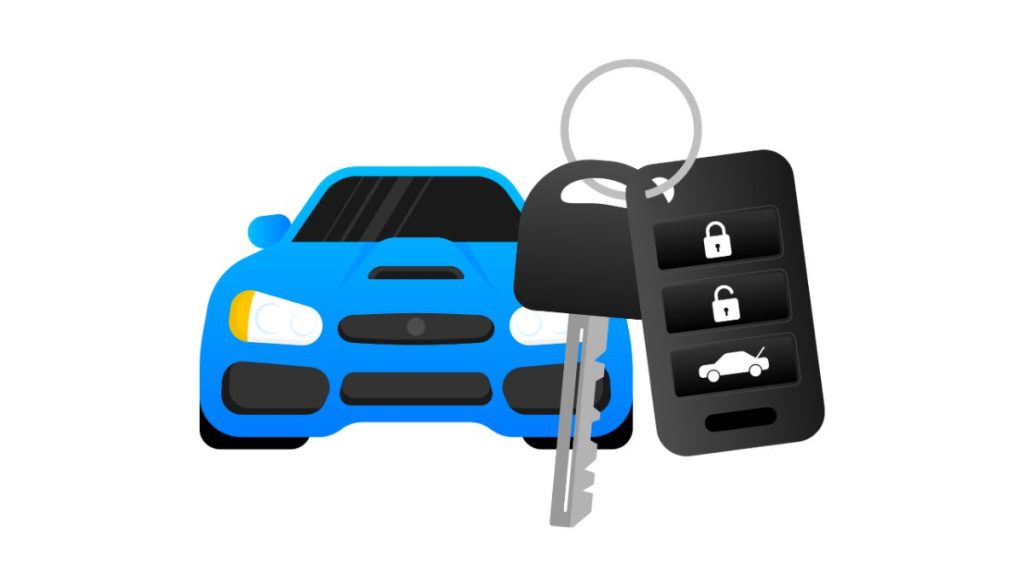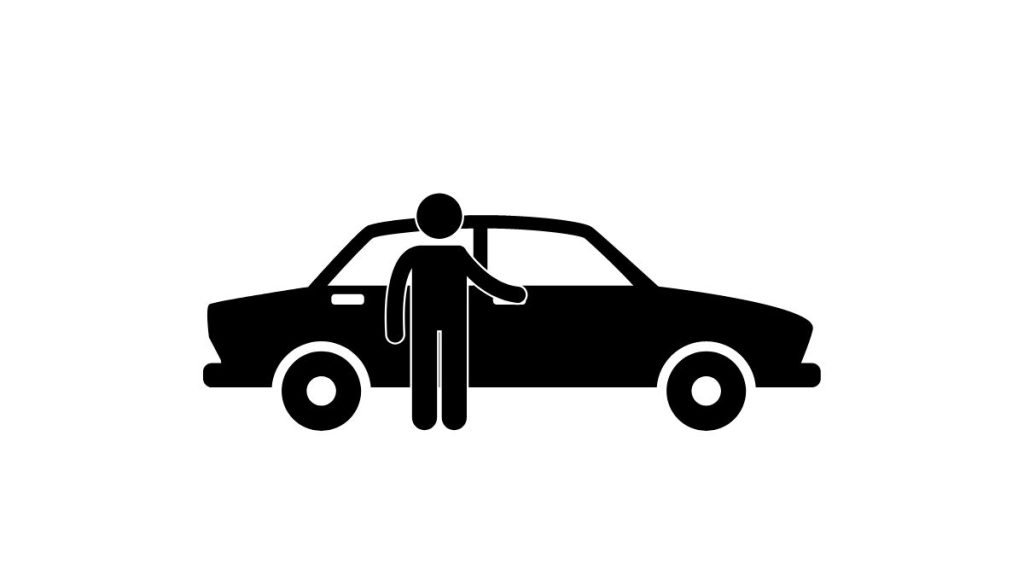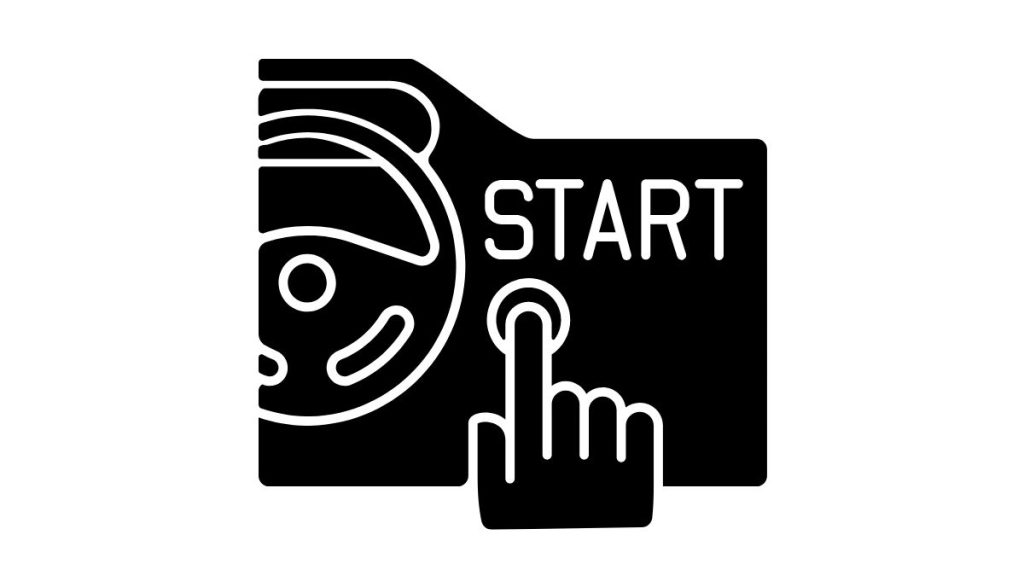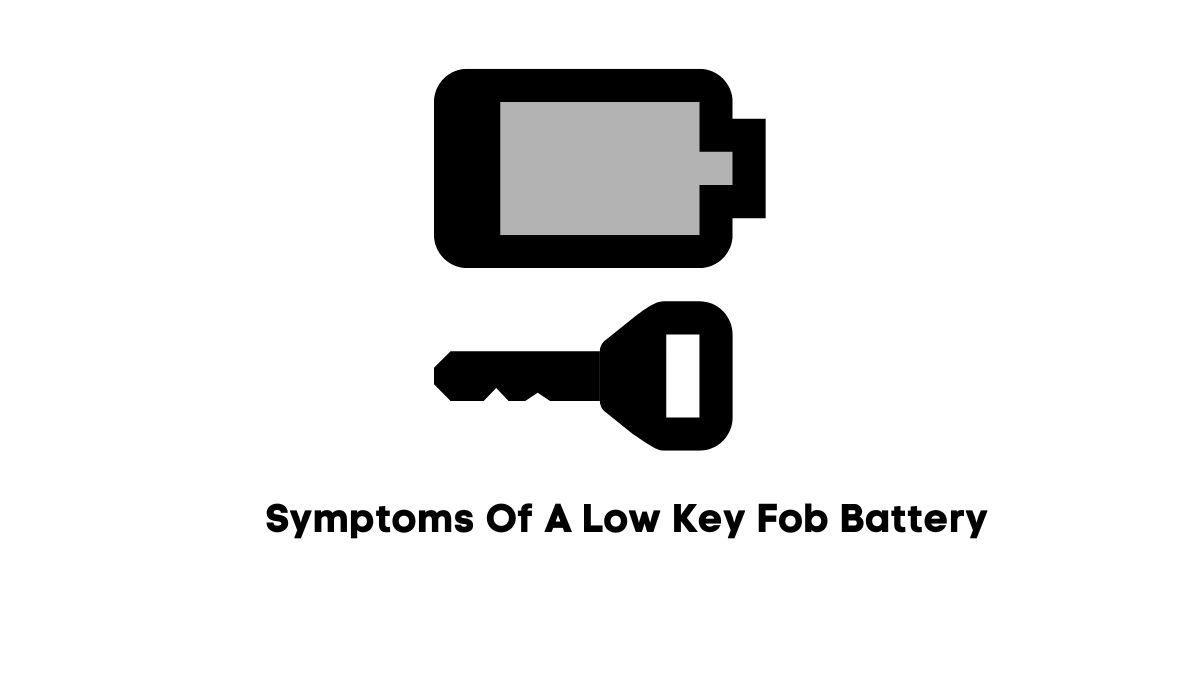A depleted key fob battery is not easy to spot. Yes, the fob will alert you by displaying various symptoms. But some of those symptoms have numerous sources. Therefore, sifting through the symptoms to determine the exact fault is easier said than done. This is what you should expect:
1). Key Fob Not Working Or Responding Properly
This is the easiest symptom to spot. It is also difficult to ignore because a key fob that doesn’t work is useless. It forces you to open the door using traditional methods. The following can explain this symptom:
- How close are you to the car? Key fobs have a limited range. The key may refuse to work because you’re too far from the vehicle. Interestingly, the range will reduce as the battery drains. Eventually, the fob will refuse to work until you’re standing next to the car.
- Are you using the correct key? Each key fob is programmed to work with a specific vehicle. You can’t interchange them.
- Key fobs can sustain damage. For instance, leaving the fob in a damp location exposes the sensitive electrical components inside to moisture.
- If the key fob only malfunctions in specific areas, blame radio interference. According to Suzanne Bloodworth from HiTech Communications, pressing a button on the fob sends a signal to the car. The vehicle cannot respond unless it hears that signal. External sources of interference, such as antennas, can disrupt communication between the key and the car.
- The key fob may refuse to work because you inserted the wrong batteries.
- Vehicles can develop electronic issues that prevent computers and sensors from either detecting the signal from the fob or acting on it.
2). Reduced Range Or Weak Signal Of The Key Fob

- This usually points to a low battery. However, the range may also reduce because you inserted a new battery whose specs don’t match the key fob’s needs.
- A weak or defective car battery can prevent the vehicle from responding to the key fob’s signal.
- The key fob may struggle to communicate with vehicles with damaged receivers.
- Look for dirty or corroded contacts. Corroded contacts disrupt the power supply by interfering with the connection between the battery and the key fob.
- The key fob can wear out over time. This causes the range to reduce gradually.
- Look for sources of interference in the area. Some manufacturers make low-quality fobs. You must point the key directly at the car to get results.
3). Delayed Response When Pressing Buttons On The Key Fob
- A delayed response means the battery is low on charge. If the battery were dead, the vehicle wouldn’t respond at all.
- Faults in the key fob, such as water damage and loose wiring, can create delays.
- You need a mechanic to search for programming issues.
- Keep an eye out for obstructions.
- Corroded contacts and debris can create delays by disrupting the power supply.
- You have a bad sensor in the car.
- Vehicles with sophisticated functions can develop software glitches.
- Maybe the buttons are damaged.
4). Inconsistent Or Intermittent Functioning Of Key Fob Features
- You know the battery is nearly dead if the fob’s functions are increasingly inconsistent. For instance, you can deactivate the alarm, but the door won’t open. Or the door opens today but refuses to open tomorrow.
- Don’t blame the battery until you check the contacts for corrosion and debris.
- Heavy radio interference in the area can prevent the signal from reaching the car. This would explain why the fob works in some areas but not others.
- The buttons can stick or break.
I warn you against using keys with inconsistent functions because you may inadvertently reset the fob sensor. Once that happens, the fob will refuse to connect or communicate with the vehicle.
5). Inability To Lock Or Unlock The Vehicle Using The Key Fob

Here, you have too many culprits to consider because the fault may lie with the vehicle, the car, or both. You’re looking at:
- A dead key fob
- A depleted battery
- The wrong battery
- The wrong key.
- Deprogramming
- A blocked signal
- An electrical fault in the vehicle
- A dead car battery.
- Dead or stuck buttons.
- Damaged wiring, etc.
If the fob won’t open the door, use the key blade and drive to a mechanic. They can perform a comprehensive search to identify the fault.
6). Difficulty Starting The Vehicle With Keyless Ignition

The keyless ignition function can fail because of a bad key fob battery. If the battery is low or depleted, the fob doesn’t have enough power to execute sophisticated functions. But this assumes the fob works in the first place.
If it couldn’t even open the car, search for signs of damage in the key, broken wiring, defective sensors, dead car battery, and starter, etc. You can’t rule out the possibility that your vehicle is the problem. For all you know, the car cannot start unless you step firmly on the brake.
7). Key Fob Buttons Requiring Increased Force Or Multiple Presses To Work

This is similar to the inconsistent functions mentioned earlier. You must press the buttons several times to open the door because the battery charge is too low. But a similar symptom will manifest as the key fob ages.
Key fobs have an average lifespan of three to four years. Don’t be surprised if an older key fob gradually loses its functionality.
8). Key Fob Indicator Light Flashing Or Dimming
Key fob indicator lights are a surefire way of identifying a low battery. They flash when the battery is low. If your key fob comes with a light that illuminates when you execute a function, that light will dim as the battery drains.
A flashing or dimming light simplifies matters because it narrows the fault to the fob. You don’t have to diagnose the car.
9). Audible Warning Or Notification From The Vehicle Indicating A Low Key Fob Battery

This is another straightforward method of identifying a low battery. Some vehicle models will track the key fob’s battery status, alerting you with notifications and blinking lights when the battery charge falls below a specific threshold.
However, unlike the indicator light on the key fob, you can’t rule out a fault in the car here. The vehicle may flash a false notification because of a programming error, loose wiring, faulty dashboard, glitchy computer, and more.
Troubleshooting Steps For Identifying A Low Key Fob Battery As The Cause Of Issues
As you now realize, the symptoms of a low battery mimic the symptoms of other faults. Therefore, it may take a while to narrow your options until you locate the true culprit responsible for the signs. The following will help you:
- If you suspect a low battery, start by replacing it. This is the simplest solution because batteries are inexpensive and easy to access. If the battery is low, the symptoms will disappear once you replace it.
- If the symptoms persist, check the new battery’s specs. Do they match the old battery’s specs? Did you install the correct battery type? Consult the manufacturer if you have doubts about the battery type.
- If the symptoms have persisted, you have a few more moves to make. First of all, read the instructions. Make sure you know how to use the key fob. Maybe the manufacturer expects you to hold the fob in a specific way.
- Are you within the prescribed range? The manual will answer this question. Don’t expect the key fob to work if you’re further from the vehicle than the manual recommends.
- If you think the key fob is dying (because of the damage it sustained or it has reached the end of its lifespan), use the spare key if you have one. If the new key works, the old key has a fault.
- Don’t throw the old key away simply because the spare fob works. Remove the battery and clean the contacts. You can also fix or lubricate stiff and stuck buttons to see if the symptoms fade.
- Take note of the moments when the key fob becomes erratic and inconsistent. If you only notice these symptoms in specific areas, you can blame radio interference. Eliminating the sources of interference will solve the problem.
- If you can’t remove the interference, use a signal extender to amplify the signal.
- Remove the obstacles between the key fob and the car.
- Talk to the dealership. Ask them for a universal remote if you don’t have a spare key. The goal is to determine whether the vehicle is the problem. If the universal remote (or spare key) doesn’t work, the door locks have a mechanical issue. You need a mechanic to take them apart, especially if the doors refuse to respond even when you insert a traditional key blade.
- If you can manually open the doors, the mechanic will check the electronics. That means troubleshooting the sensors and searching for loose connections.
- Ask the dealership to perform a firmware update to resolve glitches and errors. They can also reprogram the key.
If all else fails, use your warranty. Leave the vehicle at the dealership and let them resolve the issue. They will let you know when they find an answer.

